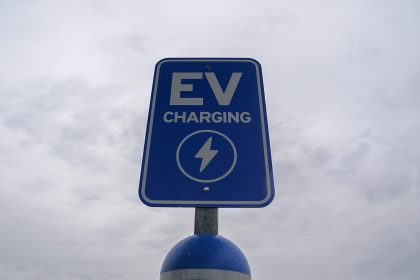Decline in Emissions and Transportation Sector Energy Demand in 2020

Although 2020 was an economically woeful year due to the coronavirus pandemic, a joint report by BloombergNEF and the Business Council for Sustainable Energy indicates renewable energy sources made record contributions to the country’s power grid.
The annual report, called the Sustainable Energy in America Factbook, presents year-over-year data and insights that chronicle trends in the energy efficiency, natural gas and renewable energy sectors. Notably, a combined 33.6 gigawatts of solar and wind capacity were built in 2020, exceeding previous records.
“The extraordinary circumstances of 2020 make the sustainable energy sectors’ achievements all the more remarkable,” the Factbook’s executive summary read. “Despite major headwinds, the transformation of how the U.S. produces, delivers, and consumes hydrocarbons, electrons, and heat marched onward. In fact, some key trends established over the last decade accelerated in 2020.”
The nation’s total primary energy usage fell by 7.8% while the economy’s size shrunk by 3.5%, according to the report’s findings. This figure represents the “largest year-on-year decline in energy consumption in at least three decades.”
Total emissions across the country fell by 9% to end the year 20% below 2005 emission levels. While the U.S. is “on track” to meet its Paris Climate Agreement goal, 2021 emissions are likely to increase alongside the country’s economic recovery.
Energy “productivity,” or the product of total energy output divided by total energy consumed, increased in 2020. However, the report concluded this was likely the result of economic hardship prompting consumers to curtail their consumption habits.
As many Americans were forced to travel and commute less due to pandemic restrictions, energy demand from transportation declined the sharpest of any sector — by 14.4%. Commercial and industrial demands for electricity also fell but were partially offset by growth in residential use, leading to an overall decline of 3.8%.
Generating one-fifth of the U.S. power supply in 2020, renewable energy made “another record contribution” with production being raised to 11% year-on-year. Natural gas remained the country’s largest source of power generation at 41% of the total energy supply, despite “its 2019-2020 growth was slower than 2018-19,” the report stated.
Coal-fired power plant’s contributions to the power grid continue to decline, falling to 19% from 45% during the previous decade. Despite lower carbon emissions across the road, rail, and aviation sectors, transportation is still the biggest driver of CO2 in the nation.
“Lower overall energy demand, depressed petroleum-based transportation fuel use, surging renewables and natural gas-fired power generation, and the continuing decline of coal combined to reduce U.S. greenhouse gas emissions by a massive 9% 2019-2020,” the text of the report read. “The decline put U.S. emissions approximately 20% below 2005 levels and, at least temporarily, put the country on a trajectory to meet its original Paris Agreement pledge of a 26-28% cut vs. 2005 levels by 2025.”
Although still the largest source of power in the country, total use of natural gas has declined by 0.8% year-on-year. Production capacity of renewable natural gas rose 8% from 2019 to 2020, and its use in natural gas-powered vehicles rose by 2% from the previous year.
While corporate decarbonization efforts increased nationwide, companies signed overall fewer contracts to buy clean power in 2020. Congress acted to support sustainable energy with legislation that extended clean energy tax credits, spent $19 billion on energy research, design and development, and provided tax credits for solar panel installation, among other measures.
“The record volume of new renewable power commissioned will generate for decades to come. Both will keep U.S. power sector emissions lower than they might otherwise have been,” the report stated.

























